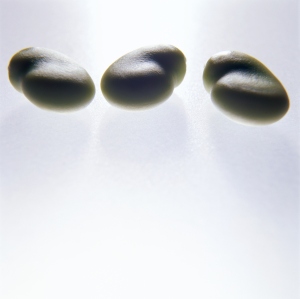 Taking daily soy protein supplements does not prevent prostate cancer from recurring after radical prostatectomy, according to a study published in the July 10, 2013 issue of the Journal of the American Medical Association (JAMA).
Taking daily soy protein supplements does not prevent prostate cancer from recurring after radical prostatectomy, according to a study published in the July 10, 2013 issue of the Journal of the American Medical Association (JAMA).
This finding comes from an interim analysis that prompted an early halt to a long-running randomized controlled trial.
“It was useless to continue,” lead investigator Maarten C. Bosland, DVSc, PhD, from the University of Illinois at Chicago, told Medscape Medical News. “You might argue that it’s not even ethical to continue a study when you know there is no treatment effect.”
In their study, Dr. Bosland and his team enrolled 177 men who had undergone radical prostatectomy from July 1997 to May 2010 at 1 of 7 centers in the United States. The participants were randomized to receive a daily serving of a beverage powder that contained 20 g of protein in the form of either a soy protein isolate (n = 87) or a milk protein placebo (n = 90). The men began taking the supplement powder daily within 4 months of surgery, and continued for up to 2 years. PSA levels were measured every 2 months during the first year of the study, and every 3 months thereafter.
A planned interim analysis of 81 men in the soy group and 78 in the placebo group indicated a lack of treatment effect, so the trial was stopped early. Overall, 28.3% of participants developed biochemical recurrence, defined as a PSA level of 0.07 ng/mL or higher, within 2 years of entering the trial. A similar number of men developed biochemical recurrences in the soy and placebo groups (22 vs 23). Although the median time to recurrence was shorter in the soy group than in the placebo group (31.5 vs 44.0 weeks), the difference was not statistically significant. Adherence was greater than 90% and there were no differences in adverse events between the 2 groups.
I’m Dr. Michael Hunter.
The small print: The material presented herein is informational only, and is not designed to provide specific guidance for an individual. Please check with a valued health care provider with any questions or concerns. As for me, I am a Harvard- , Yale- and UPenn-educated radiation oncologist, and I practice in the Seattle, WA (USA) area. I feel genuinely privileged to be able to share with you. If you enjoyed today’s offering, please consider clicking the follow button at the bottom of this page.
Available now: Understand Colon Cancer in 60 Minutes; Understand Brain Glioma in 60 Minutes. Both can be found at the Apple Ibooks store. Coming Soon for iPad: Understand Breast Cancer in 60 Minutes; Understand Colon Cancer in 60 Minuteable now: Understand Colon Cancer in 60 Minutes; Understand Brain Glioma in 60 Minutes. Thank you.
Reference: ASCOPost.com, June 25, 2013
